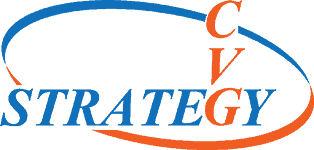
ISO 9001: 2015 Quality Management System Requirements
Proper documentation is the cornerstone of ISO 9001:2015. Creating a system of documentation that is appropriate to your company’s requirements is crucial. This is because the documentation defines the manner in which it will conduct business. Paying attention to the design of your Quality Management System (QMS) at the offset can provide an efficient system that avoids a cumbersome bureaucratic framework.
Types of documents that comprise ISO 9001:2015 documentation are:
- Scope Statement
- Quality Policy
- Quality Objectives
- Process Flowchart
- Work Instructions
- Records
Fitting the Documentation to a Company’s Requirements
The formation of each of these categories is critical and requires detailed analysis to properly implement. There is no specific requirement as to format or layout. Because each company has a unique business model, “cookie cutter” methods of implementing a quality system can have diminishing returns.
Quality Management System Documentation should be created understanding the context of the organization. This requires that all stakeholders be included. Moreover it should be concise and user oriented.
ISO 9001:2015 documentation provides instructions on how your QMS is run and ultimately how your company is run. Therefore, properly structured documentation can actually make your operations easier. This is because well designed program can integrate ISO-14001, lean methodologies, and regulatory requirements into your QMS.
Defining a Continuous Improvement System
An ISO 9001:2015 QMS, if well incorporated and conceived in its documentation, is a powerful tool that can enhance a business’s potential by creating intelligent processes, quality products, and a satisfied customer base.
As your company grows, so too will its QMS. A program started out on the right path can therefore easily grow to facilitate new aspects and players in your company’s scope, objectives, and goals. It can also adapt to non-conformities in your products and services that arise and create viable opportunities for improvement.
Control of Documented Information
Documents included in a QMS include those specified by the standard and those deemed necessary by the organization to support its activities, products, and services. Once created, these documents require controls to ensure and maintain their validity. These controls include mechanisms for identification, review, and approval.
This information is then required to be readily available to its intended users, to be appropriately preserved, and have effective version control. These document control mechanisms must themselves be documented.
Evaluation of Effectiveness
Once a QMS is defined it can be put into action and evaluated. These evaluations assess the ability of the polices and procedures to meet customer requirements and manage risks. When conformity of products and services or the degree of customer satisfaction is found to be less than desirable, improvements to the quality management system and its documentation can be executed.
These evaluations can be the result of monitoring, measurement analysis, or internal audits. The results from these findings are to be reviewed by the management of the organization so that relevant solutions can be developed and discussed.
Benefits of ISO 9001:2015
Competitive advantage
A properly tailored QMS ensures that business objectives constantly feed into your processes and working practices. By establishing a suitable framework around the context of organization and effectively implementing assessments and evaluation, a Quality Management System can evolve as your business grows.
Improves business performance
Having a comprehensive ISO 9001:2015 QMS helps your managers to raise the organization’s performance above and beyond competitors who aren’t using management systems. The certification also makes it easier to measure performance and better manage business risk.
It establishes criteria for expectation for your supply chain in terms of product quality and dependable delivery. It also instills confidence in your brand by consistently meeting customer requirements.
Quality Management Attracts Investment
Achieving ISO 9001 certification can greatly enhance brand reputation and can therefore be a useful promotional tool. It sends a clear message to all interested parties that your company committed to high standards and continual improvement.
Saves you money
Evidence shows that the financial benefits for companies that have invested in and certified their quality management systems to ISO 9001 include operational efficiencies, increased sales, higher return on assets and greater profitability. Other saving can be gained by effectively identifying and mitigating risks such as product liability and product recalls.
CVG Strategy QMS Consultants
CVG Strategy quality experts focus on processes and process improvement in all our work. Understanding Quality Management System Documentation development is a fundamental aspect of our work as consultants, helping our customers make their business run more efficiently and improving customer satisfaction.
There are many consulting companies providing support in ISO 9001:2015. What sets CVG Strategy apart from the rest is our approach. We fine-tune our statement of work depending on your capability and goals. Some clients have us serve as an advisor while they generate the documentation and implement the program themselves.
Many of our clients outsource the Quality Manager role to one of our experts, and we write the quality manual and supporting documentation set and provide all the training. Some use our expertise to include other quality guidelines and standards into their ISO 9001:2015 QMS including food, hazardous materials, and products for department of defense.
CVG Strategy is a consultancy offering coaching, mentoring, training and program development focused on areas including Business Process Improvement, ITAR and Export Compliance, Cyber Security and Quality Management Systems.


